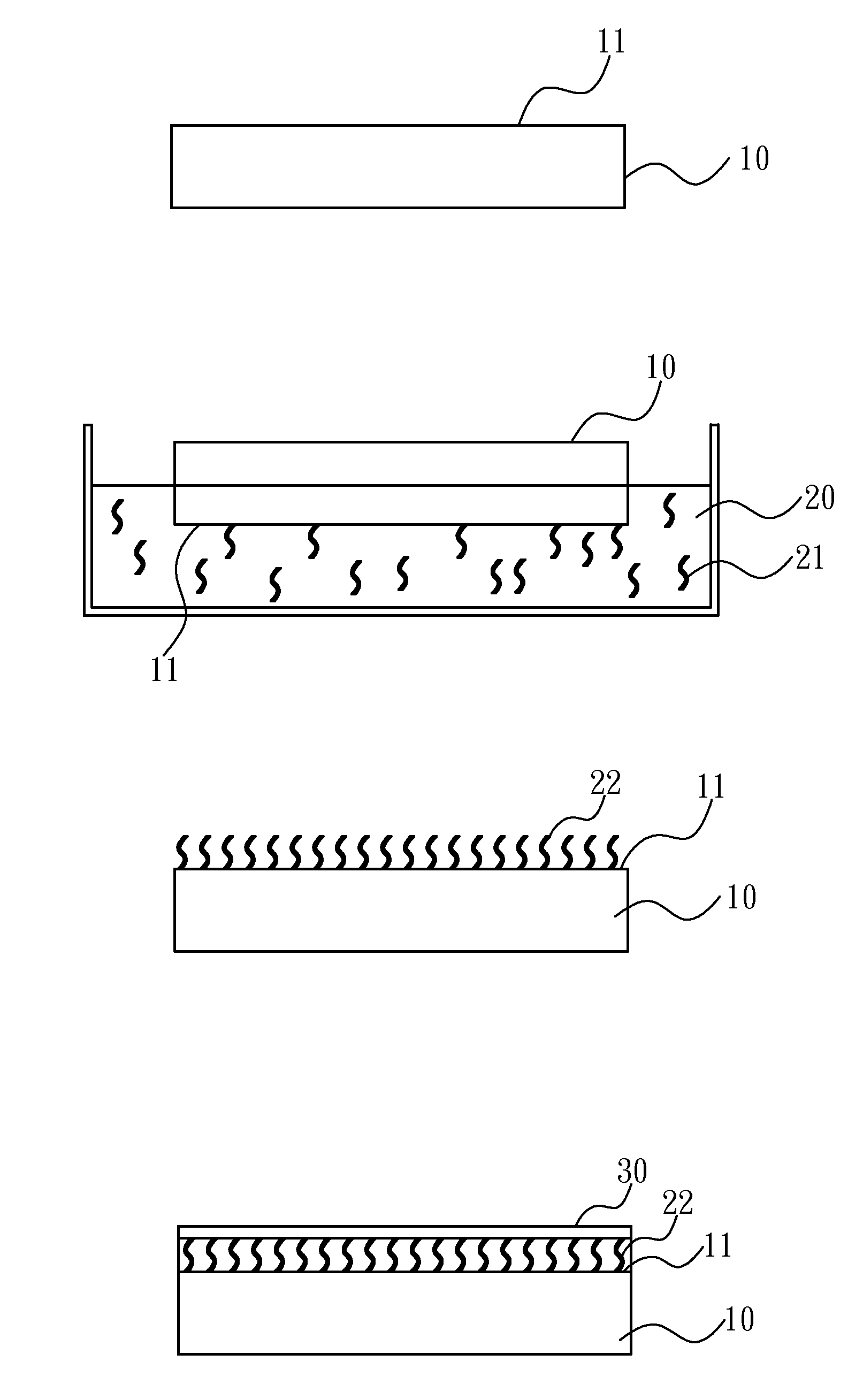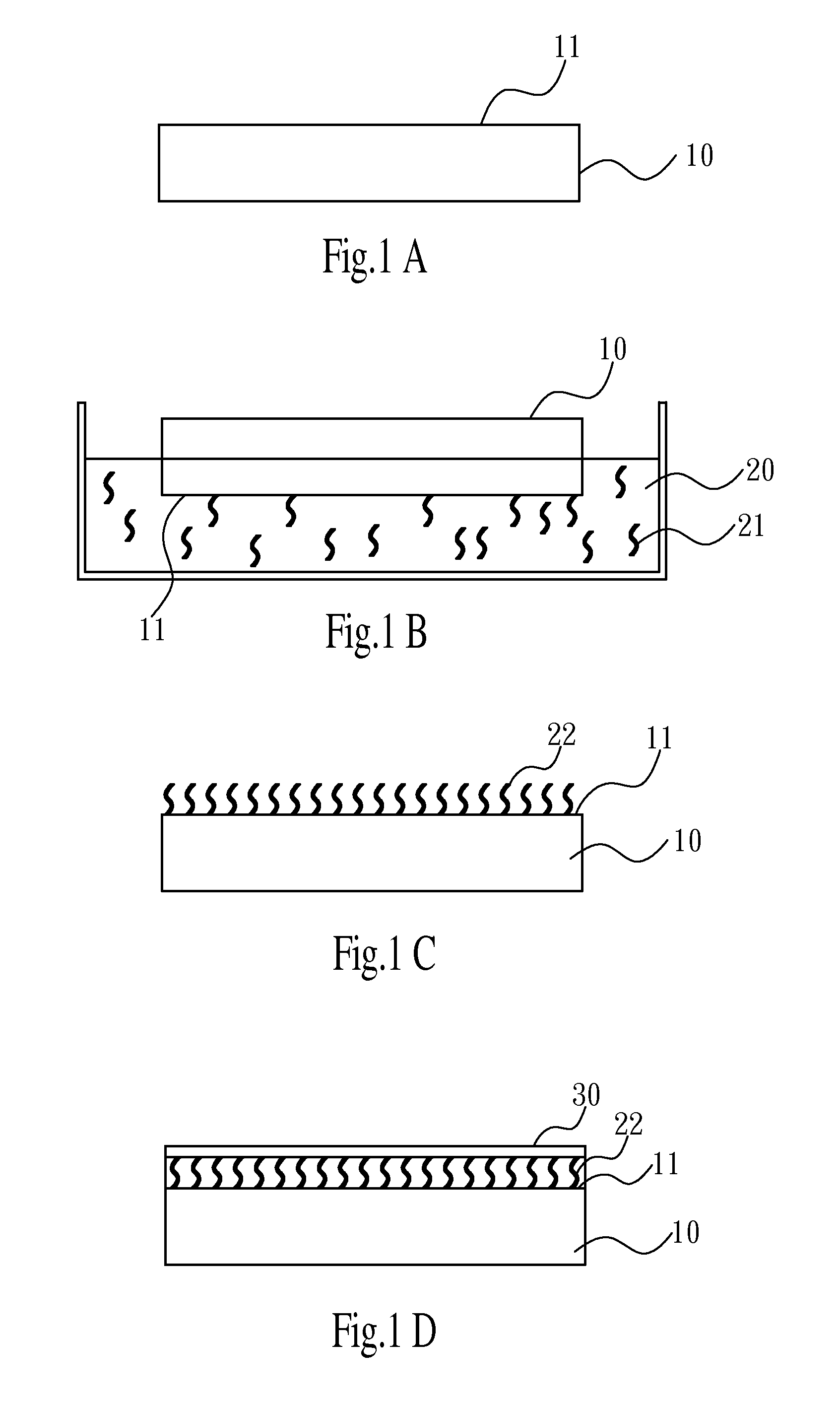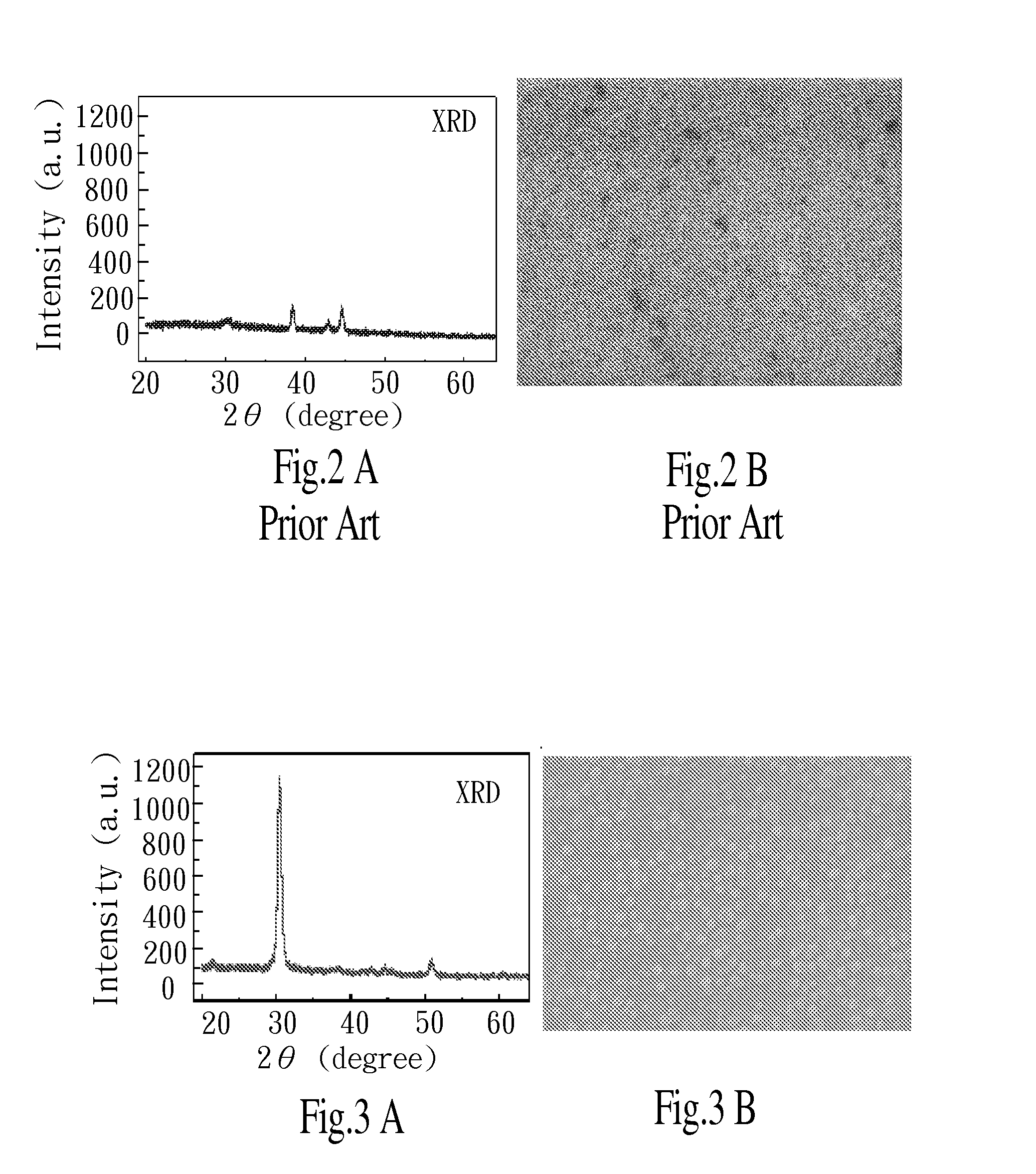Fabrication method of crystallized transparent conducting oxides on self-assembled organic layer modified substrate
a technology of crystallized transparent conducting oxides and organic layers, which is applied in the direction of vacuum evaporation coatings, coatings, material nanotechnology, etc., can solve the problems of large amount of electric energy, unsuitable high temperature conditions for many new developed devices, and large amount of material manufacturing costs, etc., to improve the chemical reactivity of materials, improve the effect of chemical reactivity and excellent physical/chemical properties
- Summary
- Abstract
- Description
- Claims
- Application Information
AI Technical Summary
Benefits of technology
Problems solved by technology
Method used
Image
Examples
Embodiment Construction
[0032]The structure and the technical means adopted by the present invention to achieve the above and other objects can be best understood by referring to the following detailed description of the preferred embodiments and the accompanying drawings.
[0033]Referring now to FIGS. 1A to 1D, a fabrication method of crystallized transparent conducting oxides on a self-assembled organic layer modified substrate according to a preferred embodiment of the present invention is illustrated. As shown, the fabrication method comprises the following steps of: providing a substrate 10 having a surface 11; processing the surface 11 of the substrate 10 by an organic molecular solution 20, so as to form a self-assembled organic layer 22 on the surface 11 of the substrate 10; and forming a transparent conducting oxide (TCO) layer 30 on the self-assembled organic layer 22 at a temperature lower than 300° C. The present invention will be described more detailed about technological features including pro...
PUM
| Property | Measurement | Unit |
|---|---|---|
| temperature | aaaaa | aaaaa |
| thickness | aaaaa | aaaaa |
| thickness | aaaaa | aaaaa |
Abstract
Description
Claims
Application Information
 Login to View More
Login to View More - R&D
- Intellectual Property
- Life Sciences
- Materials
- Tech Scout
- Unparalleled Data Quality
- Higher Quality Content
- 60% Fewer Hallucinations
Browse by: Latest US Patents, China's latest patents, Technical Efficacy Thesaurus, Application Domain, Technology Topic, Popular Technical Reports.
© 2025 PatSnap. All rights reserved.Legal|Privacy policy|Modern Slavery Act Transparency Statement|Sitemap|About US| Contact US: help@patsnap.com



